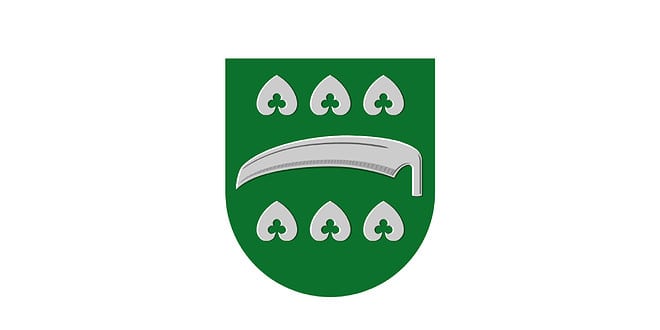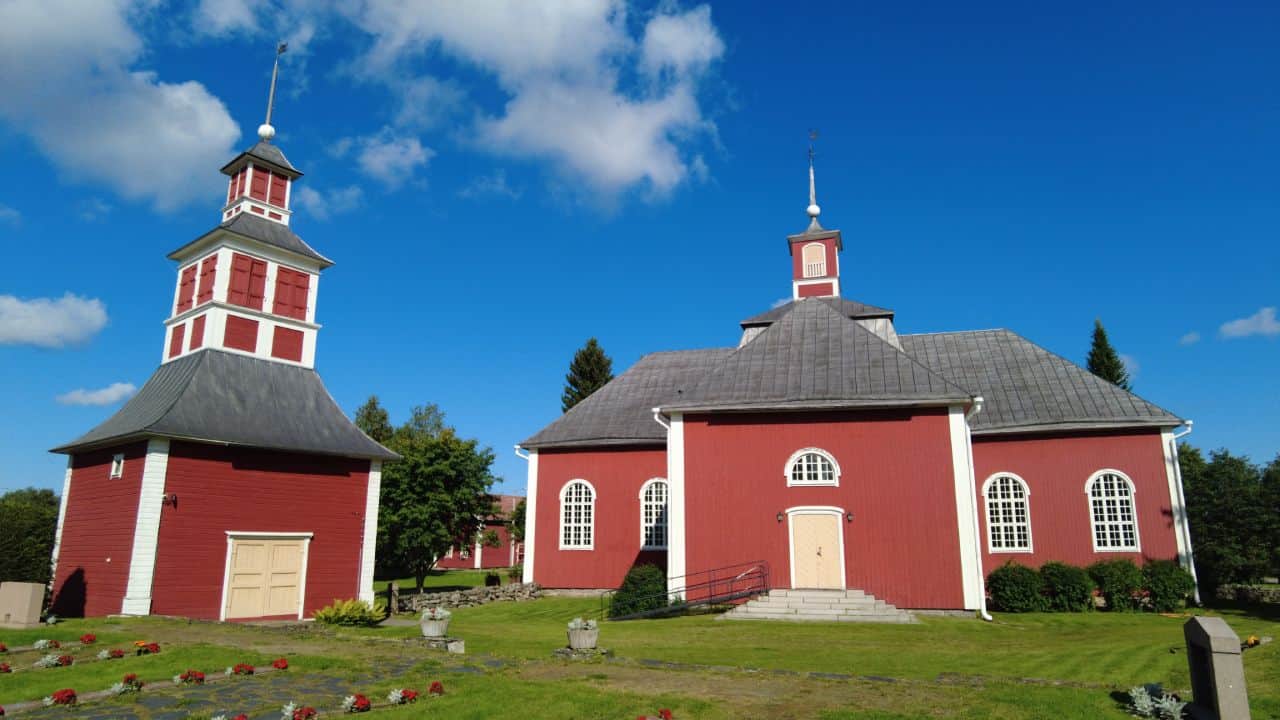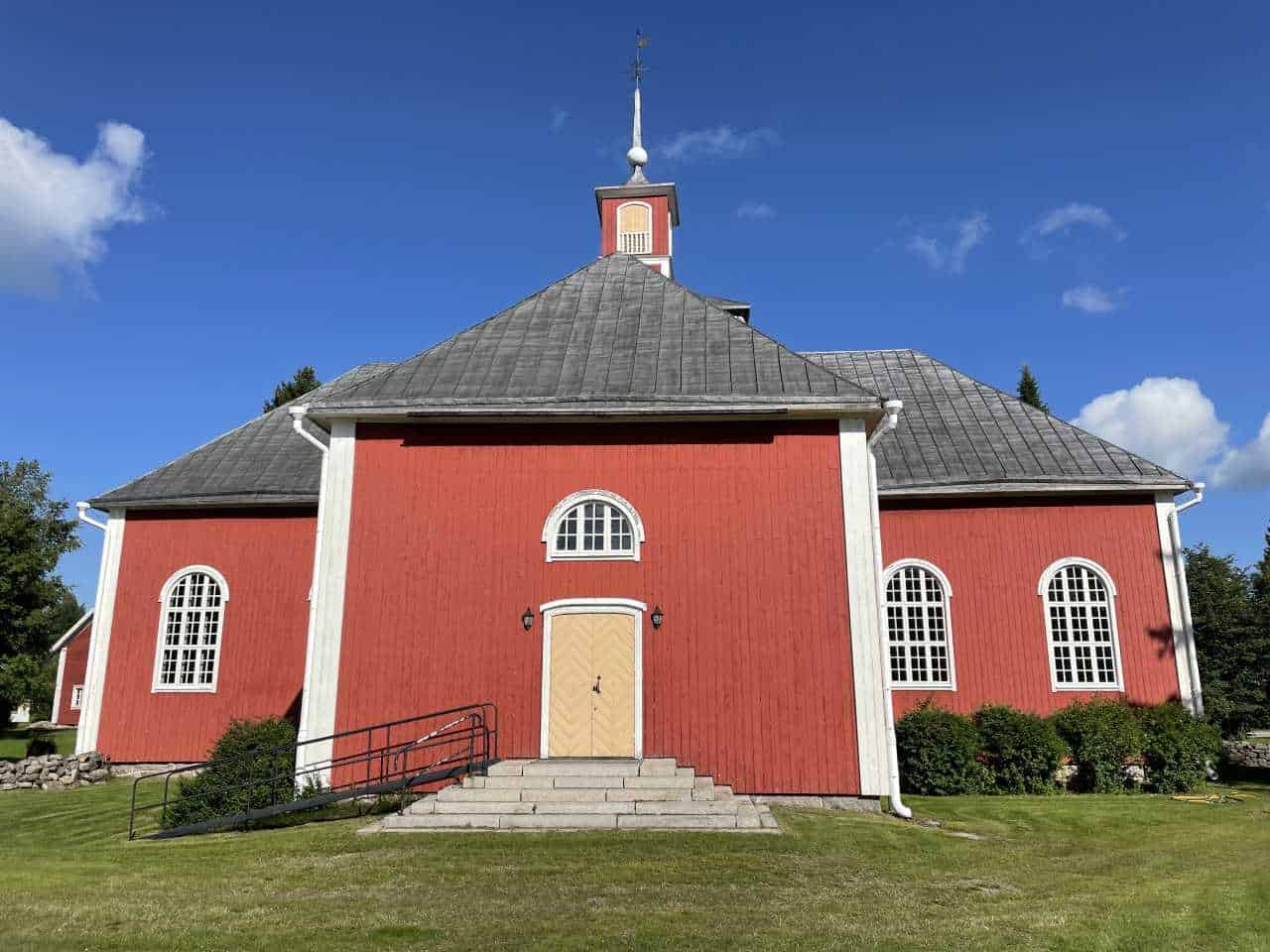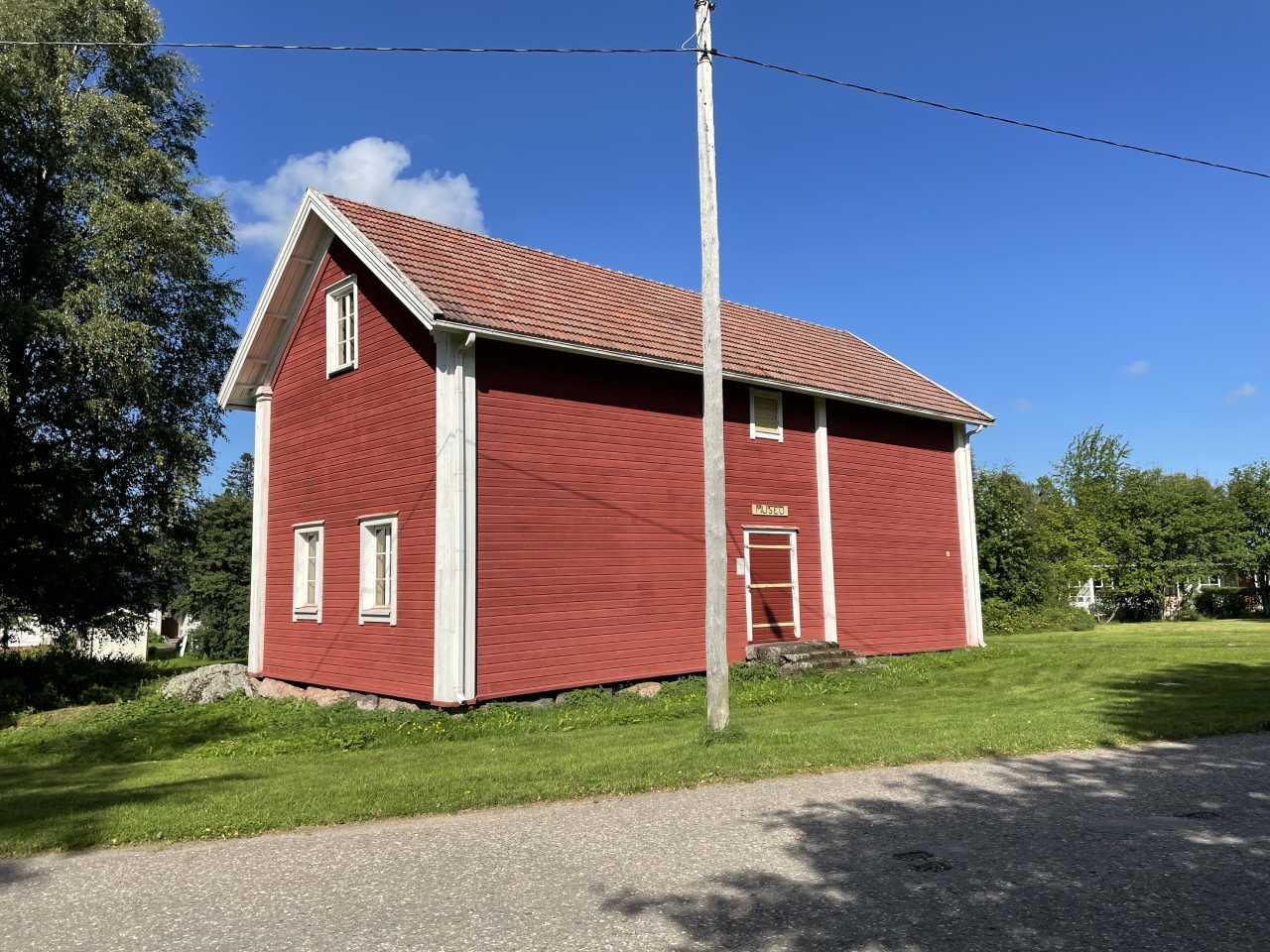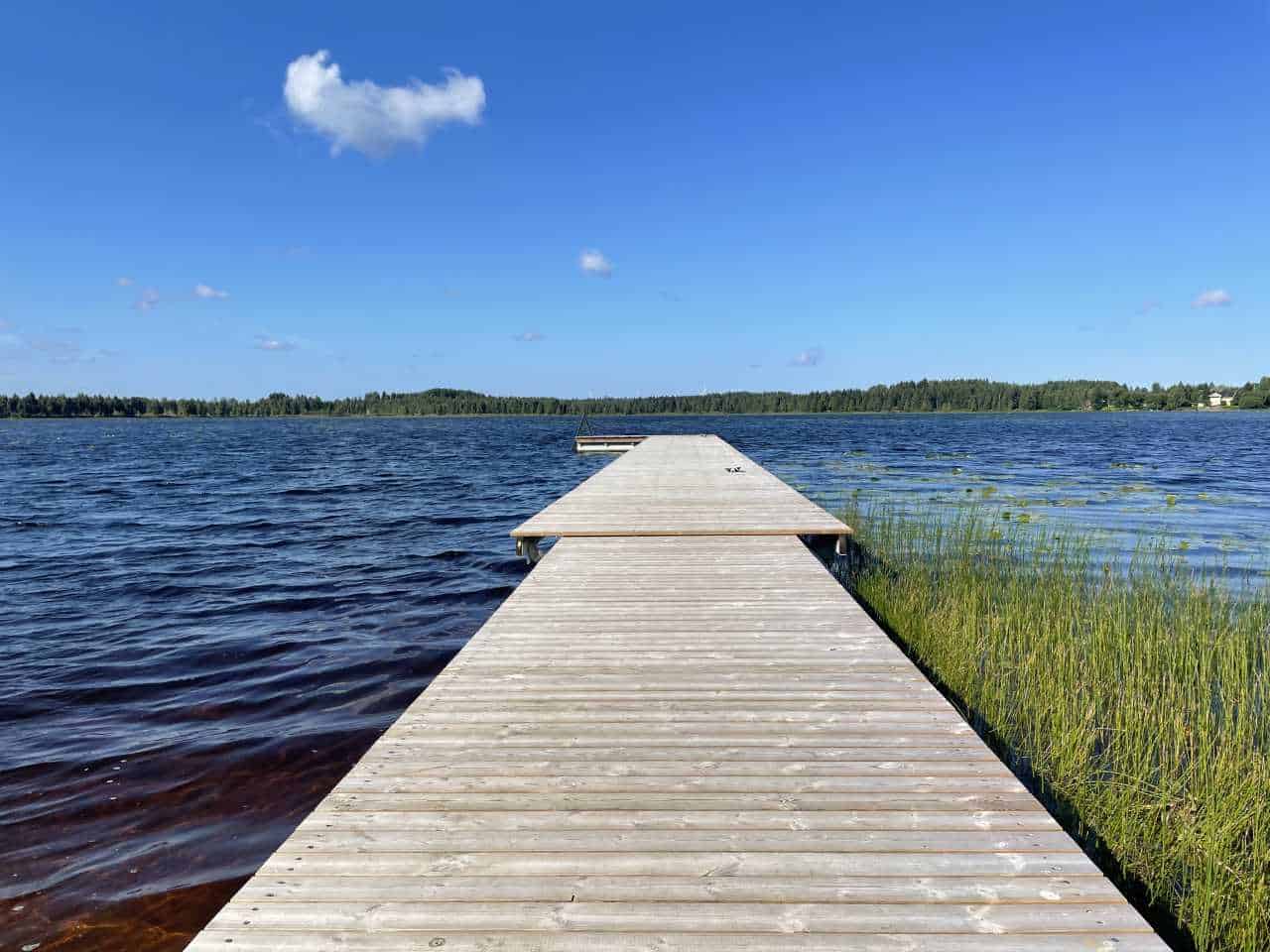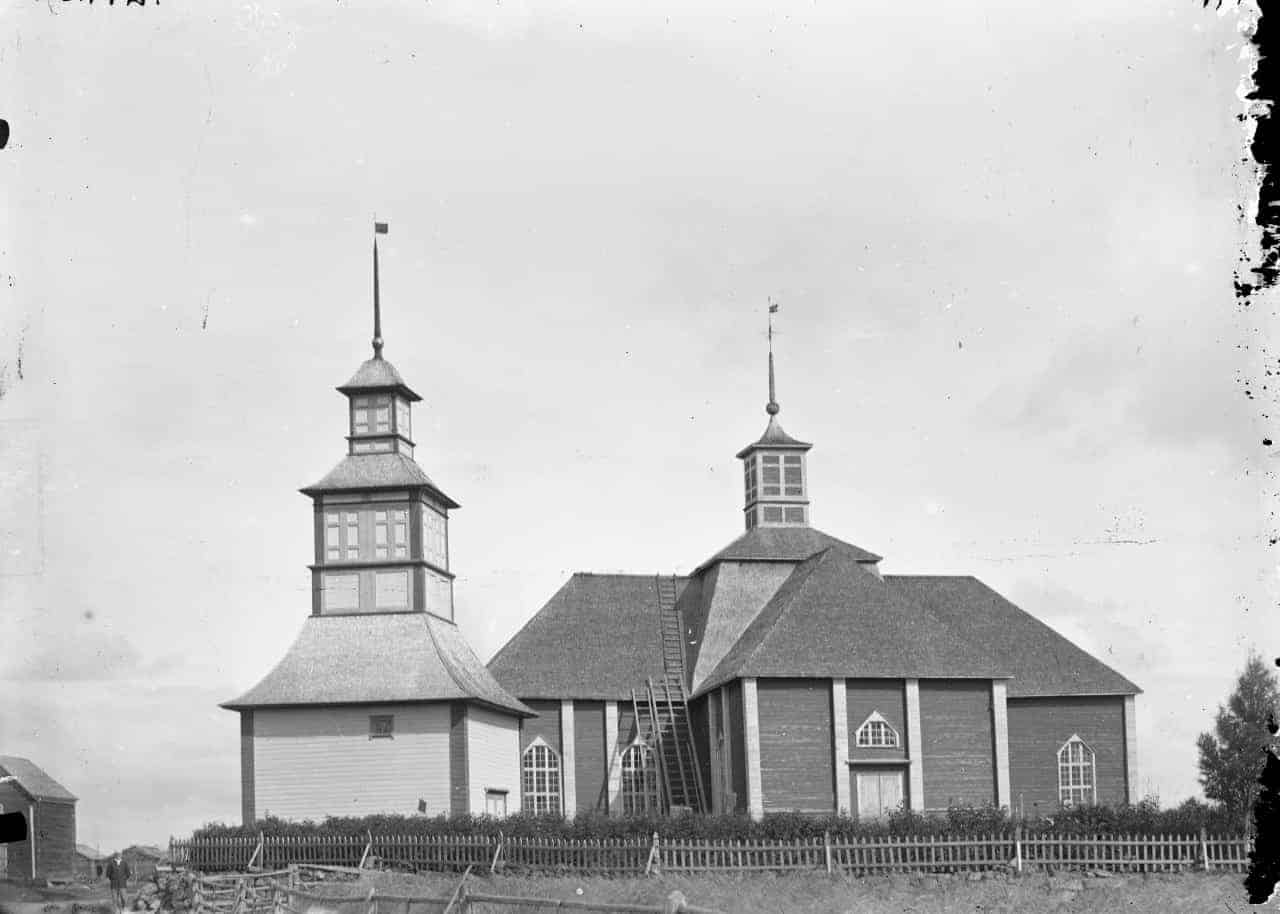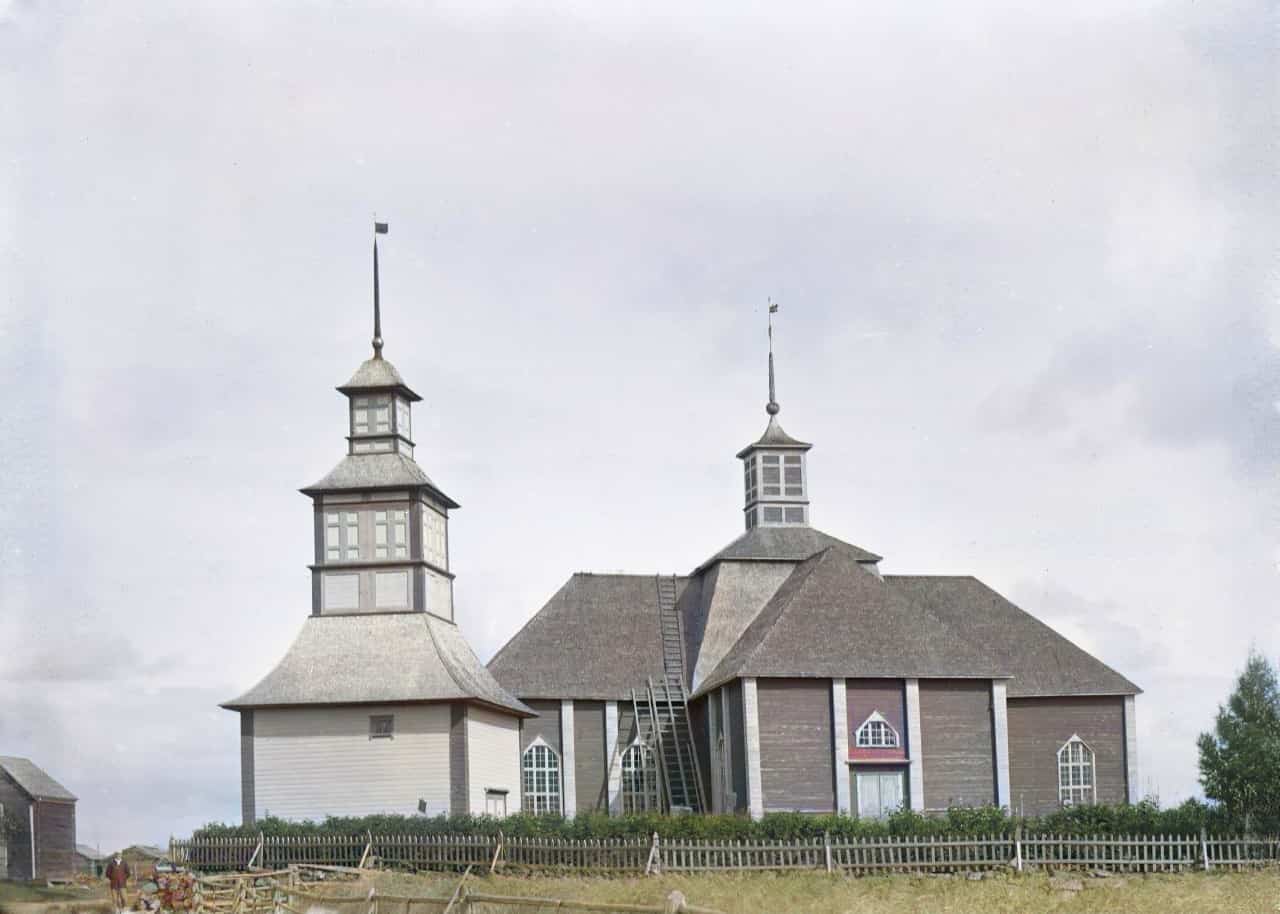Vihanti is a former municipality in North Ostrobothnia, which was founded in 1865 and was absorbed into the city of Raahe in 2013. The area of Vihanti is 489.64 square kilometers and the population is about 3,000 people.
Where is Vihanti located?
Vihanti is located approximately 37 kilometers southeast of Raahe. The location along the Ostrobothnia railway line, 70 km south of Oulu, at the intersection of main roads 86 and 88, guarantees good traffic connections in all directions.
For its most part, the area is a large expanse of wilderness with forests, fields, bogs and occasional ridges of sand and gravel. There is a mineral-rich site in Lampinsaari which contains zinc, copper and lead. Small gabbro and diorite areas are distributed evenly across the municipality.
The prevailing type of soil is moraine which is found mostly in the hilly parts of the area. Large areas of mineral soil species are topped with peat. There is an insignificant height difference in the municipality. A large portion of land remains 70-90 meters above sea level. Some elevations are observed in Keloselkä and Latvangas, reaching a maximum height of 110 meters. There are 4.94 square kilometers of water bodies in Vihanti that include small lakes and ponds.
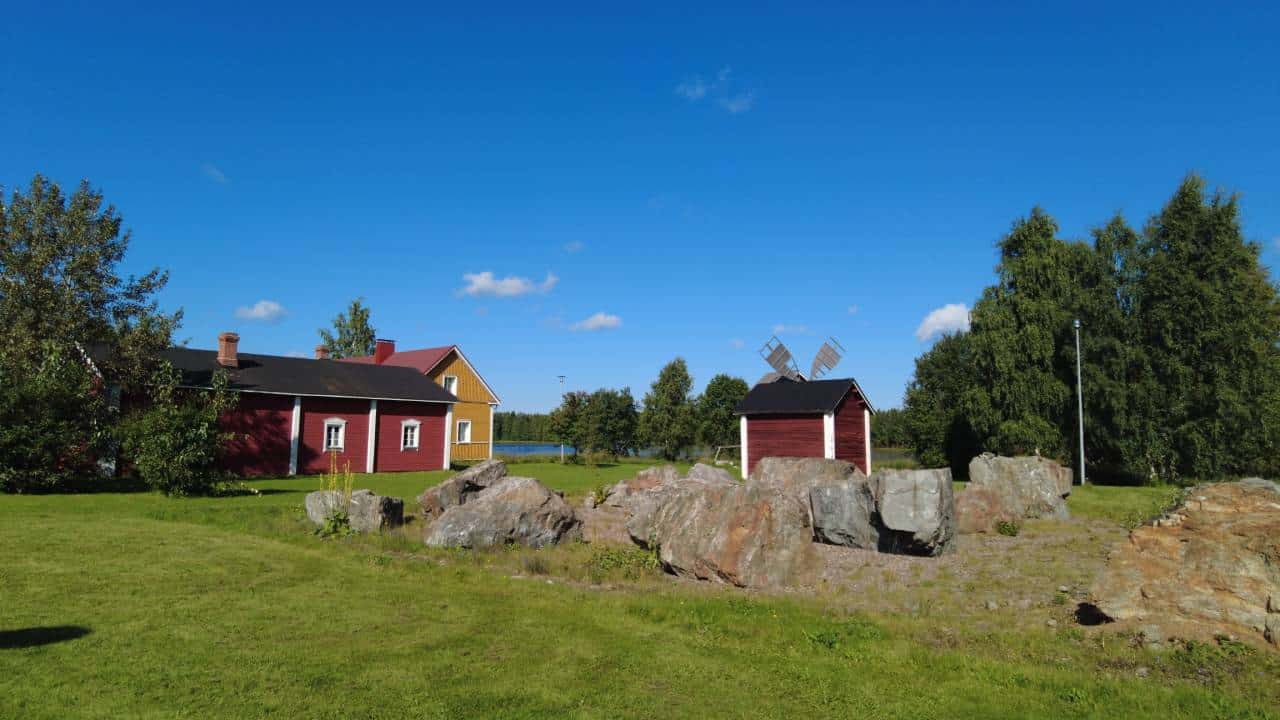
The largest lakes are Alpuanjärvi, Ylä-Vuolujärvi, and Haukilampi. Another important lake is Kirkkojärvi which has been dried up then restored to its natural state. There is a beach with a wooden pier on the shore of the lake where people can soak up the sun, have picnics, and practice water sports. The beach offers easy access to the nature trails, a network of 100 km of trails with picturesque views and diverse fauna and flora that is worth exploring.
The routes run through the scenic landscapes and historical villages of the former municipality. There are camping sites and cabins along the way. Winter sports enthusiasts can visit the trails in the snowy time of the year to practice skiing and snowboarding. The main rivers are Vihanninjoki and Piipsanjoki that empty in Pyhäjoki River. Bogs occupy a significant part of the former municipality. The most extensive ones are Märsyneva and Kuuhkamonneva.
Attractions in Vihanti
Mäntylampi stage was the main dance venue in North Ostrobothnia in the 1970s. Nowadays, it only hosts a few events in the summer. Since 1964, Mäntylampi stage has been hosting Härkäjuhlat Festival on the second Saturday of August. The event features performances of domestic dance ensembles and rock orchestras. Vihanti is the place of birth of the rock band Gobra which is made up of musicians from the former municipality.
On the shore of Kirkkojärvi lake is Local Culture Center, a multipurpose cultural and recreation hub with many buildings. The center offers space for conferences, youth enrichment events, museum exhibitions, training and accommodation. The Ukonkantti building houses the local Library, one of Raahe’s three public libraries. The library offers book borrowing, access to internet, computers, magazines, document printing and console games.
There is a model of a Stone Age village outside of the center that showcases life in the area in prehistoric times. You can find both ancient relics and elements of the modern lifestyle there. In summer, the surrounding area is good for hiking, kayaking, tennis and beach volleyball. Local Church dates to 1784. It was named after the wife of Gustaf III of Sweden, Sofia Magdalena.
Services
Vihanti boasts accessible and well-functionable basic services. The village has a well-equipped health center with highly qualified specialists that cover a large variety of healthcare services including a maternity and a dentist. There is also a pharmacy, a couple of banks, a library and a day care center. The construction of a new commercial building in the center of Vihanti is currently under way.
On top of that, the village has a modernized school that attracts families with kids from the surrounding areas. More than 300 students are studying in the school right now. A new gym is expected to be completed in 2023. Vihanti is known for a strong cooperative spirit within its communities. Village associations work actively on increasing the well-being and progress in the former municipality.
Some successful projects include the renovation of Gunnar Manor, the maintenance of nature trails thanks to which lots of people can enjoy hiking and skiing, as well as the organization of village events such as Christmas fairs, Easter parties and cultural festivals.
Well-known people from Vihanti
- Impi Aronaho
- Carl Gustaf Borg
- Pasi Ikonen
- Tero Ojanperä
- Kalervo Ojutkangas
Residence
Vihanti is a vibrant village in North Ostrobothnia, Raahe district. The area is known for good quality and fresh groundwater, clean nature and potatoes. Vihanti has incomparable terrains for outdoor activities, an excellent network of trails and many active organizations and associations, so there are plenty of leisure opportunities.
Fostering a comfortable and safe living environment is important to the people of Vihanti. Vihanti’s village activities are marked by abundant participation in the events and life of the own village community. Village activity associations organize various activities for the residents of their own village, the whole municipality and even the region.
Vihanti village offers considerable advantages in terms of living. The area’s clean environment is a significant attraction factor, as the emissions of heavy industry in the coastal area do not pollute the air in Vihanti. In Vihanti, you can find incomparable terrains for outdoor activities. The ski slopes in the area are the best in the region, and compared to the coast, the ski season is several weeks longer.
On the other hand, the cooling effect of the sea does not spoil a warm summer day. The area offers plenty of plots from different parts of the municipality, and you can get information about private plots and properties on the plot exchange.
Near the center there are three watered lakes, Kirkkojärvi and Saarelan and Rantasenjärvi. This gives considerable added value to the apartments in the surrounding area. For children, the safe growing environment offered by a small village is a considerable advantage. Distances to city-level services are reasonable. If you are planning to build and value the aspects described above, then Vihanti is a suitable place to live for you and your family.
Villages of Vihanti
- Alpua
- Kuusirati
- Ilveskorpi
- Lampinsaari
- Lumimetsä
- Myllyperä–Perukka
- Möykkyperä
Village associations of Vihanti
- Alpuan kyläyhdistys ry
- Kuusiratiset ry
- Lampinsaaren kyläyhdistys ry
- Lumimetsän nuorisoseura ry
- Läntisrannan kyläyhdistys ry
- Myllyperä-Perukan kyläyhdistys ry
- Möykkylän kyläyhdistys ry
Companies in Vihanti
Vihanti is a village that secures good basic services, actively seeks new operating models, openly builds cooperation and offers a comfortable living environment. The village is known for its excellent groundwater and potato industry.
As a result of the development of business activities, the village has an industrial area with an excellent location in the immediate vicinity of the city center. The village offers a competitive framework for both SME entrepreneurship and larger industry.
Sports clubs in Vihanti
- Vihannin Urheilijat ry
- Vihannin judo ry
History of Vihanti
Stone Age
Vihanti area ridges emerged from the sea forming three islands in 5000 BC. A thousand years later, the islands formed a cape. In the following six millennia, an extensive coastal region formed between two river valleys. It was covered initially with hardwoods, then coniferous forests. Ancient artefacts found in the area prove that people were familiar with the region in the Stone Age.
The first excavations took place at the turn of the 19th-20th centuries. Discoveries have been made primarily in Rantasenjärvi, Saarelanjärvi and Kirkkojärvi. Several artefacts were found in Petäjämäki, Alpuanjärvi and Lumimetsä. Signs of the earliest inhabitants were discovered in the church village of Vihanti.
The areas glorious period of prehistory was during the Comb Ceramic Culture. At the peak of the culture in 4000-2000 BC, the area cape was already above sea level. The coastal region attracted many people from inland. Archeologists collected more than 500 artefacts from that time.
About 40 sites were identified as places of residence of Comb Ceramic people. At the end of the Stone Age, the hammer axe culture spread across Finland. The culture reached the area too, which is proven by a few prehistoric axes discovered in the area.
Bronze and Iron Age
When it comes to the Bronze and Iron ages, excavations didn’t have much success. There are only a few finds from those times. The most notable ones are a bronze buckle and an arrowhead. In forests, some giant graves and furnaces were found. Along with that, a dozen Iron Age finds suggest that the area is not completely empty.
16th century
Vihanti is mentioned for the first time in the tithe tax list of Saloinen from 1562, which makes it safe to assume that the historical period of the former municipality started in the 1560s. The population grew at a steady pace until the war between Russia and Sweden broke out in 1570. One of the objects of dispute was the eastern border, as Russians considered Salo a part of their Karelia. The war was tiring for the Finns and brought casualties and damage to critical infrastructure.
In 1595, the sides signed a peace agreement according to which Finland’s eastern border moved further to the north where it is today. As the pressure on the area lowered, the region attracted an increasing number of new residents. Except for the wars and famine of the 1690s, the population in the area kept growing century after century.
The main occupations of the earliest inhabitants were fishing, hunting and livestock raising. Due to marshy soil, it was difficult to grow crops. It was only in the 19th century that people started to cultivate hay. In the 20th century, two dairies were established. One of them, Alpua Cooperative Diary, was the largest dairy in North Ostrobothnia.
Evolution of Vihanti Parish
At first, Vihanti was part of Salo parish. In 1680, it became the parish village of Saloinen region and seven decades later received the status of chapel. It became a separated parish in 1921. Its first church was made of wood and was built in 1680. It was taken apart in 1784, when a new church was completed by Simo Jylkä-Silvén. After two and a half centuries, the church is still intact and organizes services for the faithful. It is also a prime attraction of the region.
Construction of the mine
Vihanti started to flourish economically when the Lampinsaari Mine started operating in 1951. The mine’s ore contained zinc, lead and copper. During its operation, the population of Vihanti grew significantly. From a small and isolated village, Lampinsaari became a lively and prosperous village with a wide range of facilities.
After the establishment of the mine, a road, a railway, a telephone line and a dozen of apartment blocks were completed in Lampinsaari. Other facilities included a health center, three shops, a school, a bank and a community center. The mining operations stopped in 1992 which caused the population of the municipality to decrease.
 Raahe Guide Raahen Esittely
Raahe Guide Raahen Esittely
